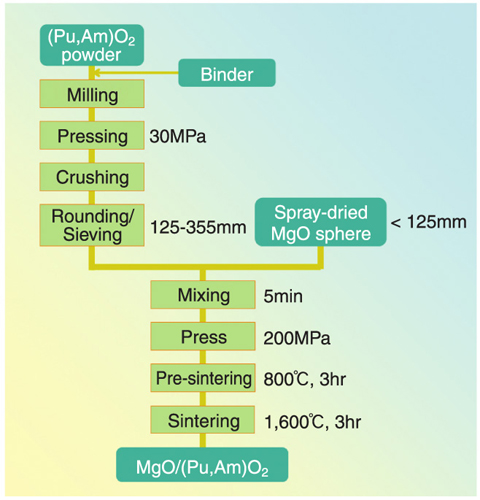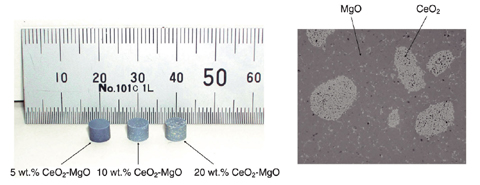Fig.1-7 FR cycle scheme that incorporates advanced oxide fuel

Fig.1-8 Fabrication process of macro-dispersed type fuel

Fig.1-9 Appearance and microstructure of the advanced oxide fuel
Minor actinides (MAs), which are recovered from spent nuclear fuel, are of special concern because of their lasting radiotoxicity and decay heat. Therefore, recovery and recycling of MAs in fast reactors (FRs) are key technologies for the successful realization of the FR cycle system, which can lead to a reduced environmental burden and a sustainable energy supply. The most promising candidate fuel for such FRs is considered to be a mixed oxide (MOX) fuel doped with 1~5wt.% of MAs. On the other hand, the MAs should be incinerated as soon as possible in the introductory phase of FRs since a large amount of MAs accumulate during extended operation of a light water reactor (LWR). Therefore, an advanced oxide fuel with a high content of MAs combined with inert matrix (IM), e.g. magnesium oxide (MgO) or Molybdenum (Mo), has been proposed for rapid incineration of MAs. These advanced oxide fuels have advantages in containing a large amount of MAs and enhancing thermal and physical properties better than the standard MOX fuel. Treatment of the advanced oxide fuel separate from the standard MOX fuels in the fabrication and reprocessing stages as in dedicated small-scale facilities was considered (Fig.1-7). This leads to concentration/ isolation of MAs by a small treatment cycle, for a small impact on the main FR cycle. The problem here is that the existing fabrication processes for such advanced oxide fuels are based on advanced/complicated procedures which are not adaptable to the presently used commercial manufacturing technology, i.e. powder metallurgy. Therefore, novel technology has to be optimized and established.
In preparation for this introductory phase of FRs, the purpose of this study is to establish a simple fabrication technique for advanced oxide fuel that is adaptable to the standard one, for the rapid deployment of advanced oxide fuel production. A basic study for fabrication of an Am-containing advanced oxide fuel with MgO was carried out using a powder metallurgical technique. Macro-dispersed (particles with diameter of more than 100µm) fuels were fabricated in the present work. This type of fuel is designed for the suppression of irradiation damage of the matrix mainly by fission products, which lead to degradation of thermal properties. Fig.1-8 shows the fabrication process of macro-dispersed type fuel by powder metallurgy. Fig.1-9 shows the appearance and microstructure of the advanced oxide fuel, cerium dioxide (CeO2) -MgO. CeO2 was used as a surrogate for Am-oxide. Advanced oxide fuel with MgO that had good characteristics was obtained.
In future work, the fabrication and evaluation of Am-containing advanced oxide fuel will be carried out. These results will be reflected in the further development of MA recycling in FR cycle systems.